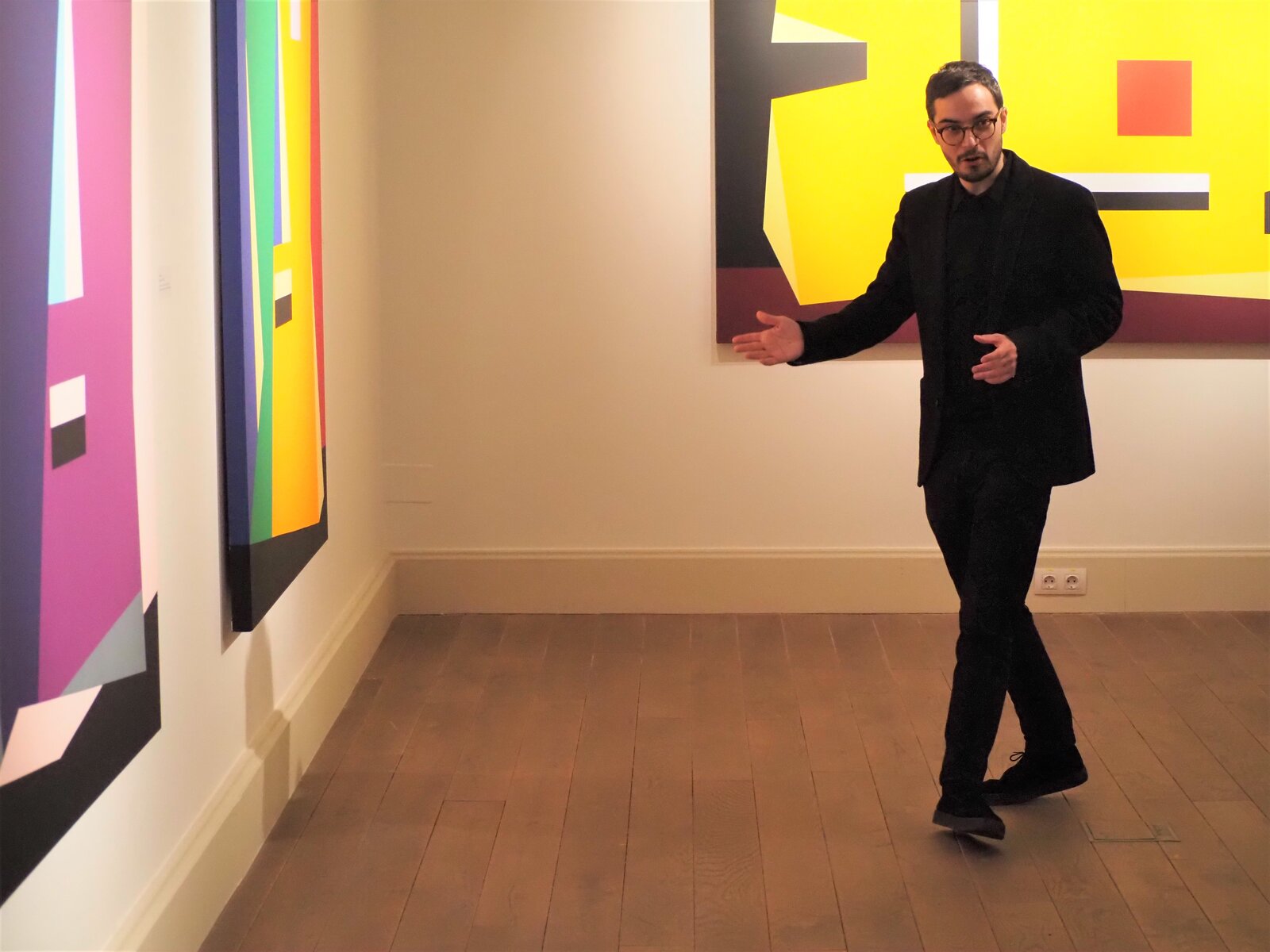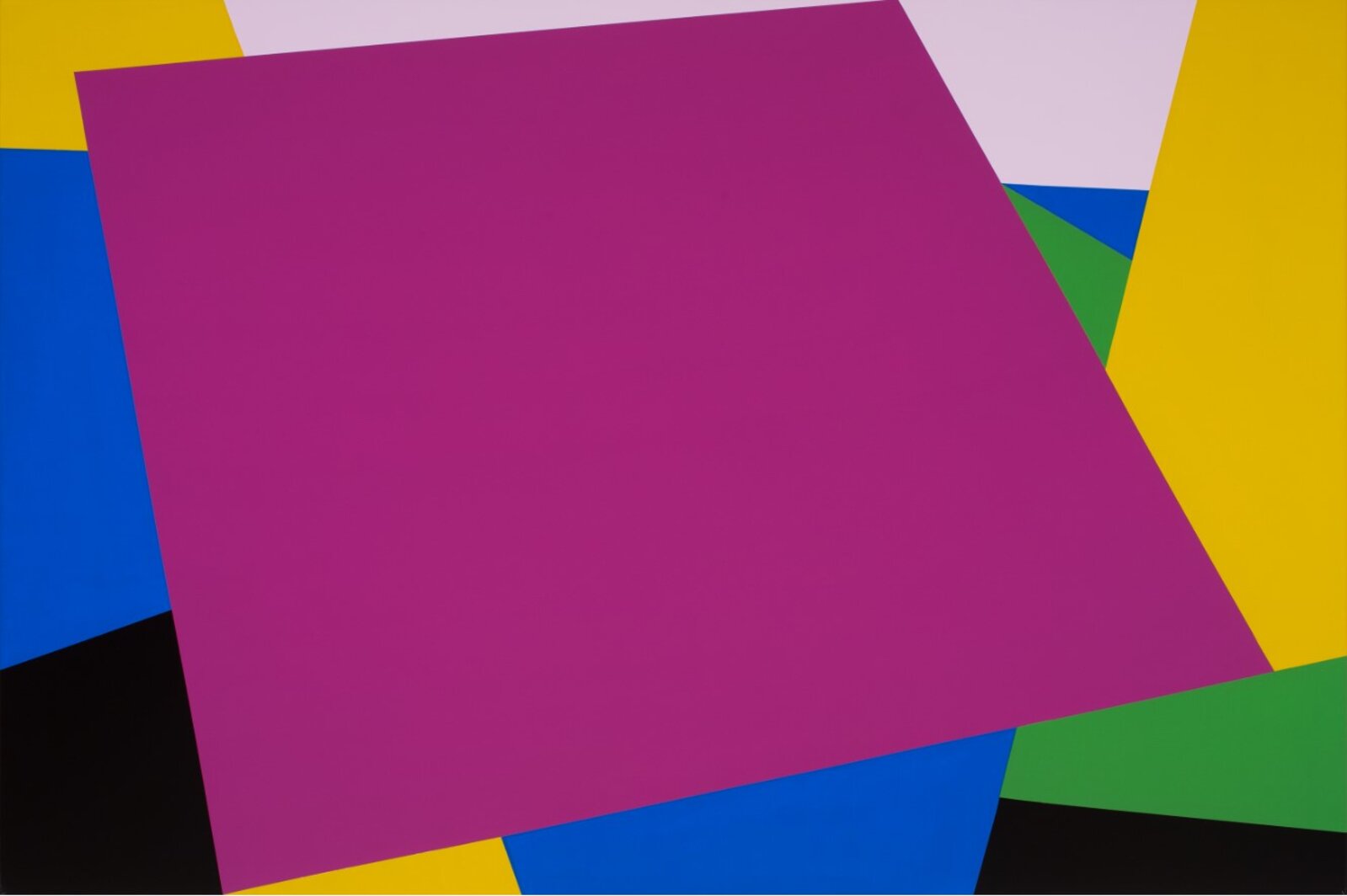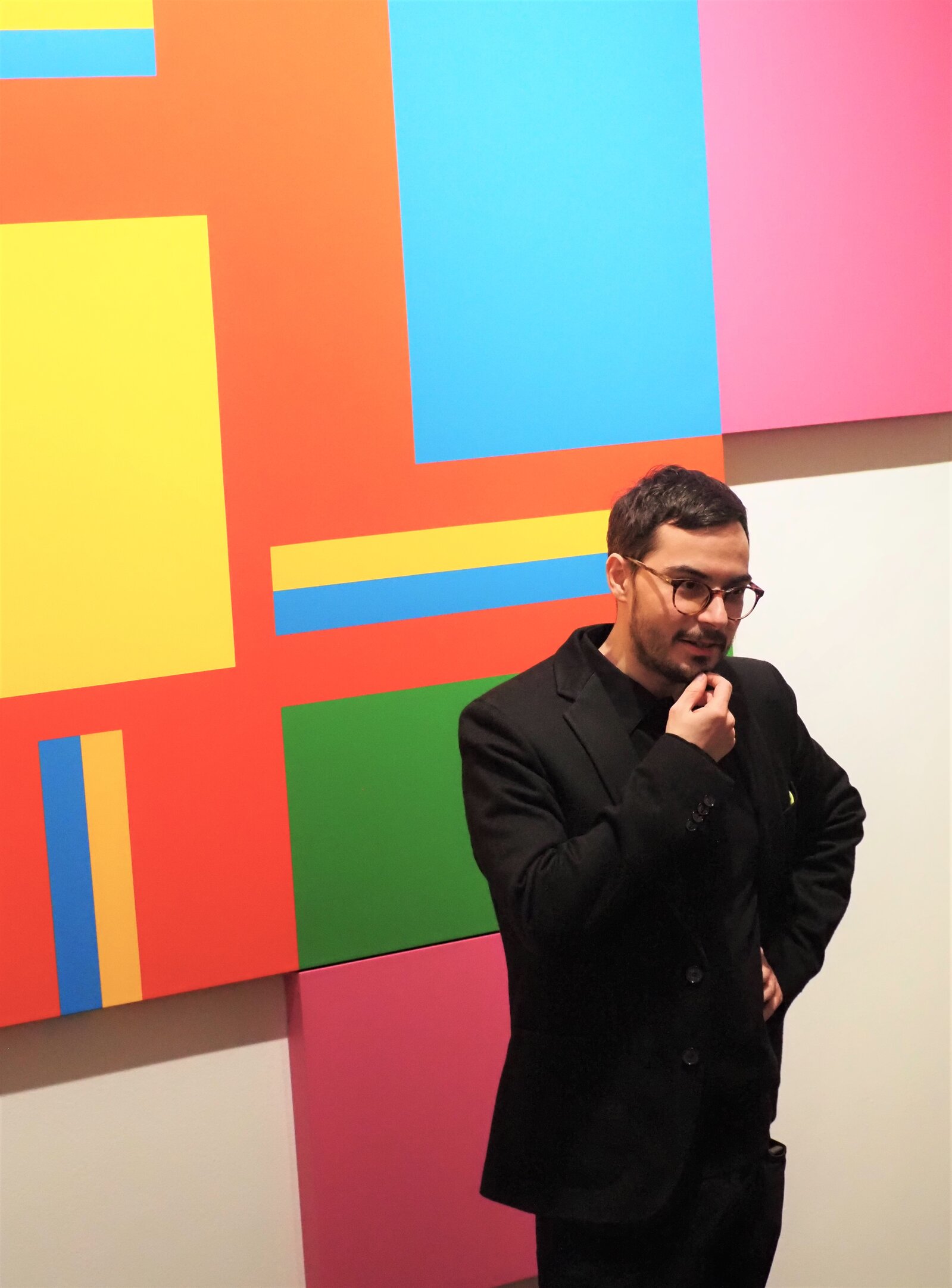"Situations", the Imre Bak Exhibition is on show in Balatonfüred until May - We spoke with its curator, Dávid Fehér.
We have reported earlier on this Imre Bak exhibition, “Situations”. This time we spoke with the curator of the show, Dávid Fehér, Director of the Research Institute on Central European Art History at the Museum of Fine Arts and curator of 20th century and contemporary art, about the exceptional art of Imre Bak.

Dávid Fehér at the Imre Bak exhibition in Balatonfüred, Photo: Sára Sebestyén
Imre Bak's exhibition, “Situations”, is unique in several ways. What makes the show truly special to you?
Imre Bak and I started working on this exhibition years ago. The intent was to review Imre’s latest creative periods. István Hajdu's monograph was published in 2003, giving a comprehensive overview of the artist's entire oeuvre up to that point. However, there was no review of the works he created since then until this exhibition. In the late 1990s, Imre Bak gradually distilled the language of his paintings. Digital visual culture became increasingly important to him. His works reflected the relationship between digital images and traditional paintings; to what extent the images of the digital world influence the human vision and our relationship to classical painting. What was also exciting was the return of figurative associations in Bak's art after the 1970s. He created ‘Ön-Arc-Kép’ (Self-Port-Trait), in which geometric shapes are assembled to create a face, a suggestive gaze, a personal and impersonal portrait. The exhibition in Balatonfüred is unique because it is the first time that the artist's journey between 2004 and 2022, the evolution and alternation of series and formal systems, is explored.
We mustn’t forget that while Imre Bak himself was involved in the preparations, his unexpected death at the end of last year meant that he wouldn’t be there for the opening.
The preparations for the exhibition were, indeed, overshadowed by the artist's unexpected death. We tried to ensure everything was exactly according to what we had agreed with Imre. It is actually the last collection in which he could play an active role. His last painting, ‘Örök totem’ (Eternal Totem), created a few weeks before his death in November 2022, is on display in this show. We had already planned that this would be the closing work of the exhibition. Unfortunately, this arrangemental aspect has taken on a new meaning in the present context. We tried to commemorate this aspect fittingly at the vernissage on 22 January. It was a sad but illuminating event and it attracted a huge crowd. Tamás Trombitás, a close friend and colleague of the artist, gave a wonderful speech in his memory. We also played the recorded statement Imre Bak made at the opening of the Top 10 exhibition earlier in the Vaszary Gallery in Balatonfüred. It was heart-breaking to listen to Imre speak.

Which of his works are exhibited?
The exhibition presents 41 works in 8 sections, loosely arranged in chronological order, step by step, cycle by cycle. The collection starts with works from 2004 to 2008, with highlights such as the ‘Üresség fényei’ (Lights of the Void) from 2004, which revisits the recent history of the square motif, the ‘Valószerű’ (Realistic) from 2006, which depicts a mysterious face. The second section is a selection of works in which Imre Bak disrupted the harmony of compositions that are based on verticals, horizontals, and diagonals. Acute angles and splinter-like forms define the pictured space, casting shadows. These include the show’s title piece, ‘Helyzetek’ (Situations) of 2009, in which the sharp splinters describe dynamic and aggressive situations. In the next room, the main work is Matisse he painted in 2014, in which Imre thematises the relationship between fields of colour and spaces, going back to the Matisse tradition in the history of painting. Beam-like shapes and imaginary painted frames dominate the pieces in the next section: Imre Bak has stepped outside the rectangular panel-painting several times in his career. Graffiti created in 2019, a moulded canvas similar to many of Bak's earlier works is on view in this room. The beam-like forms are assembled into a harmonious system of almost infinite tranquillity in the next section. We can follow the disintegration of this harmony in the collage series Situation he painted in 2020, in which Imre Bak has cut up and rearranged screen prints of earlier works into broken, disharmonious structures. The monumental paintings of the same title in the next section sprouted from these, followed by a series of paintings dominated by shades of off-white, suggesting an ethereal hovering, an infinite silence, leading to the artist's last works.
We understand that a catalogue was published for the exhibition.
Yes, a catalogue of more than a hundred reproductions of works was printed, including an even richer selection of Imre Bak's works from 2004 to 2022. In addition to my introductory essay, the catalogue includes an interview Imre Bak gave with the world-famous Swiss curator Hans Ulrich Obrist.
Which painting is your personal favourite?
It isn’t easy to choose because there are several notable works in the exhibition. I particularly like Lights of the Void and Realistic because Imre created them just when I started to get involved with his art. Matisse is particularly close to me because I have been very involved with Matisse's paintings in recent years (I had the pleasure of curating the recent Matisse exhibition in Budapest.) I learned a lot about the art of Henri Matisse from Imre Bak. This Imre Bak painting is included in the catalogue of the Henri Matisse: The Colour of Thoughts exhibition.

Dávid Fehér at the Imre Bak exhibition in Balatonfüred, Photo: Sára Sebestyén
What do Lake Balaton and the region mean to you?
I have always admired Balaton and have long been interested in the relationship between the lake and art ever since I wrote my first essay on art history about József Egry in high school. It is always a pleasure to visit the Egry József Memorial Museum, and to return to the Vaszary Gallery is an out-of-the-ordinary experience - I admire its rich programme. It is an honour to be able to organise an exhibition here. I had never seen Lake Balaton in winter before: the meditative silence, and the incredible play of colours on the horizon, was a memorable experience during the breaks in installing the exhibition.
Vaszary Gallery plans for 2023
The Vaszary Gallery's exhibitions for this year’s Veszprém-Balaton European Capital of Culture programme had already started in 2022 with a display of material from the Budapest Municipal Gallery, presenting the history of modernism. In the spring of 2023, however, Balatonfüred will inaugurate a new exhibition space: the new Modern Art Gallery (MoMü), on the street connecting the Vaszary Gallery and the Hospital of Cardiology. It will be the venue for collection of thousands of pieces of András Szöllősi-Nagy and Judit Nemes they have assembled in Paris. The new venue's European, overseas, and Hungarian material will focus on constructivist and concrete art movements.
Geometric abstraction and systematic painting will be the central themes of several exhibitions in 2023, represented by Dóra Maurer's works in addition to Imre Bak's recently opened show. Both artists are considered prominent representatives of neo-avant-garde art, including minimalism, hard age, and shaped canvas.
The third highlighted exhibition of 2023 in the framework of the VEB2023 ECOC programme, will be the Balatonboglár Chapel Project, entitled “Balatonboglár 50”. The show commemorates the 50th anniversary of the chapel workshop in Balatonboglár, where some 200 artists exhibited their work for four years before the authorities forcefully shut the place down. The project was designed and curated by the sculptor György Galántai.
The Vaszary Gallery will also operate the renewed open-air large-screen cinema in the summer, with ten showings. The Vaszary Art Workshop is preparing for this year's exhibitions under the direction of Orsolya Nyitrai.
